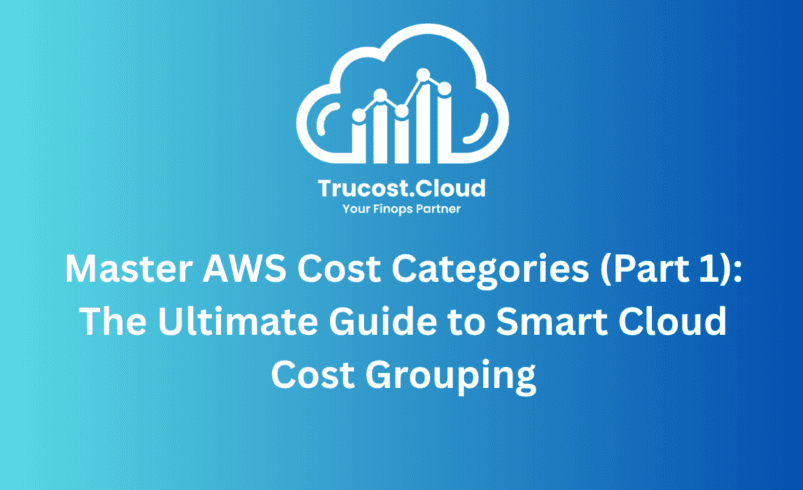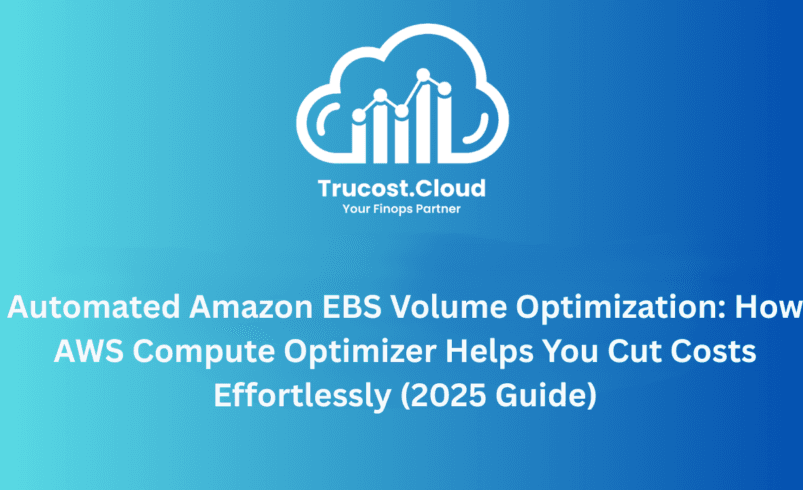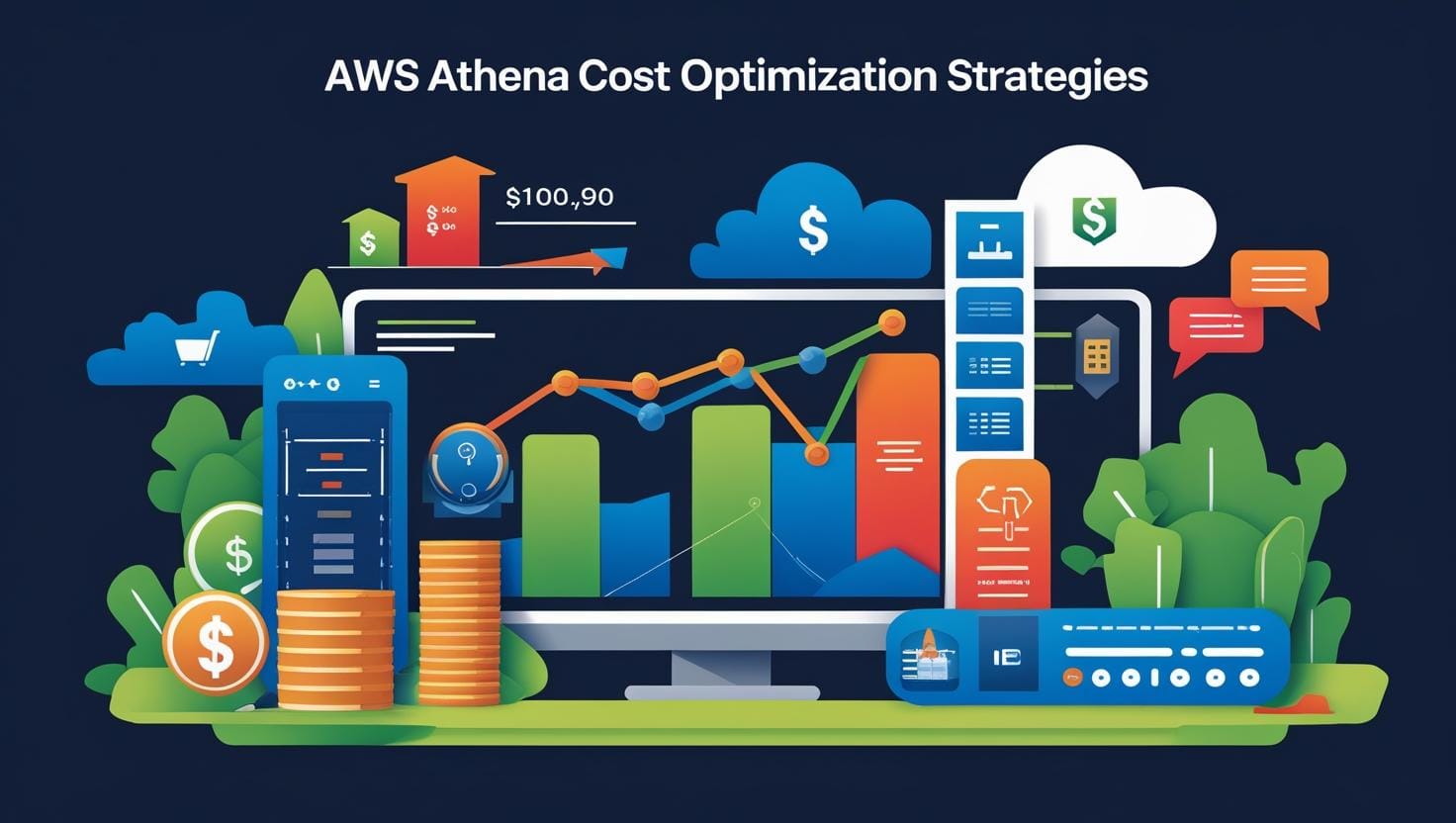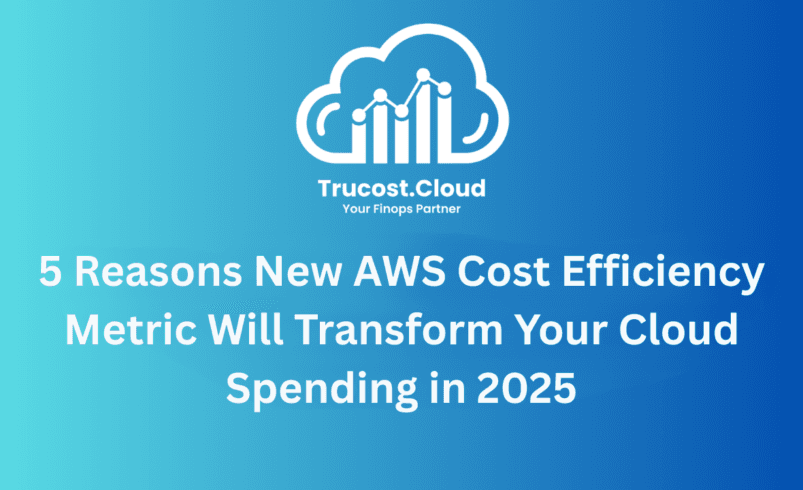
5 Reasons New AWS Cost Efficiency Metric Will Transform Your Cloud Spending in 2025
Cloud cost optimization has long been a core pillar of any mature FinOps practice—but measuring how efficient your cloud actually is has remained one of the biggest unsolved challenges. Every team speaks a different language: engineering prefers utilization metrics, finance wants ROI, product teams look for unit economics, and executives demand a simple number that expresses cloud efficiency at a glance.
AWS has finally solved this long-standing challenge.
On November 19, 2025, AWS introduced AWS Cost Efficiency, a new metric available inside Cost Optimization Hub, designed to give organizations a single, unified way to measure how efficiently they’re spending on cloud resources.
For FinOps teams, CFOs, cloud engineers, and business leaders, this is a milestone moment.
At TruCost.Cloud, we’ve helped teams navigate complex AWS cost environments—and this new metric is one of the most impactful additions we’ve seen. Below, we break down how Cost Efficiency works, why it matters, and how you can use it to drive real savings and behavioral transformation across your organization.
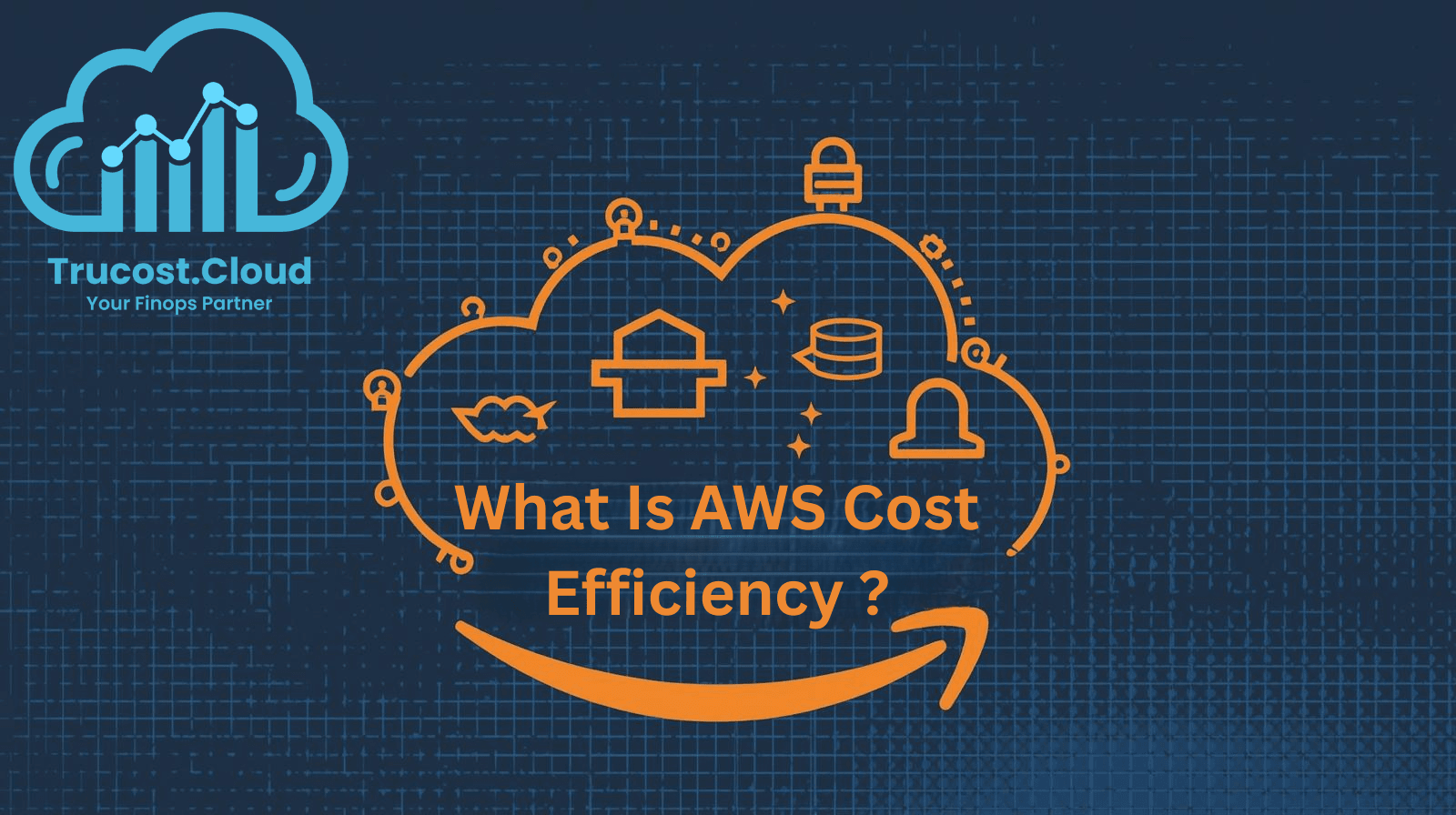
What Is AWS Cost Efficiency?
Cost Efficiency is an automatically calculated, AWS-standardized metric that evaluates how efficiently you’re using your cloud environment across:
- Rightsizing
- Idle resource cleanup
- Commitment optimization (RIs & SPs)
- Storage optimization
- Migration opportunities (like moving to Graviton)
- Discount-aware savings calculations
It’s represented as a single score between 0% and 100%, using the formula:
Cost Efficiency = [1 − (Potential Savings / Total Optimizable Spend)] × 100%
This metric refreshes daily and uses 30 days of rolling amortized spend, meaning it’s both current and stable.
Why Measuring Cloud Efficiency Has Always Been Hard
Before AWS introduced this metric, organizations faced three recurring problems:
1. No Common Definition of “Efficiency”
Different teams tracked different indicators, making alignment nearly impossible.
2. Fragmented Metrics
CPU utilization, RI coverage, idle percentages—each useful alone, but misleading when used independently.
3. Manual, Error-Prone Effort
Most companies spent months building internal metrics only to spend longer getting leadership buy-in.
The result?
Teams argued about the metric more than they improved the environment.
How AWS Cost Efficiency Solves These Challenges
✔ Combines all optimization strategies into one score
No more balancing “clean up idle resources” vs “increase Savings Plans coverage.”
✔ Creates a universal language across engineering, finance & leadership
Everyone understands a single score:
- 90% = extremely efficient
- 50% = improvement needed
- 30% = major optimization opportunity
✔ Fully automated, fully AWS validated
No custom logic.
No spreadsheets.
No pipelines to maintain.
✔ Directly tied to real savings
Every 1% improvement in your efficiency score maps to a measurable dollar savings amount.
How Cost Efficiency Works Behind the Scenes
1. Potential Savings
From:
- Rightsizing EC2, RDS, Auto Scaling
- Removing idle resources (EBS, load balancers)
- Commitment-based discounts (RI/SP)
- Storage optimization (EBS, RDS storage)
- Migration and modernizations (Graviton)
2. Total Optimizable Spend
All costs for services supported by Cost Optimization Hub, using:
- Net amortized cost
- Post-discount pricing
- Excluding credits/refunds
This ensures both accuracy and simplicity.
Why This Metric Matters for FinOps Teams
1. Benchmark Across Teams Fairly
Finally compare:
- Business units
- Departments
- Application teams
- AWS accounts
- Regions
Using a single, standardized efficiency score.
2. Track Trends Over Time
You can instantly see:
- Effects of optimization
- When inefficiency creeps in
- Seasonality patterns
- Impact of new deployments
3. Prove ROI to Leadership
The ultimate FinOps challenge solved.
Example:
Actuals | Value |
Efficiency increased | 60% → 82% |
Potential savings reduced | $800K → $414K/month |
Monthly savings gained | $386,000 |
Annualized impact | $4.6M |
This is the language executives understand.
4. Power a Cultural Shift
Daily refreshed scores create a feedback loop that motivates teams to take consistent action.
How TruCost.Cloud Helps You Get the Most from Cost Efficiency
While Cost Efficiency is powerful, organizations still need help:
- Identifying which recommendations truly matter
- Prioritizing work across teams
- Building accountability and reporting
- Automating optimization workflows
- Aligning engineering and finance
This is where TruCost.Cloud accelerates your FinOps maturity.
With TruCost.Cloud, you get:
✔ A unified dashboard combining Cost Efficiency with budget variance, RI/SP coverage, and savings performance
✔ Automated weekly optimization reports
✔ FinOps-as-a-Service for continuous cost governance
✔ Executive-ready summaries tied directly to business KPIs
✔ Custom automation using AWS APIs, Athena, and Cost Explorer
If Cost Efficiency is the “what,”
TruCost.Cloud is the “how.”
How to Use AWS Cost Efficiency to Improve Cloud Spend
1. Benchmark Your Organization
Start by grouping by AWS account:
- Identify top performers
- Highlight teams that need support
- Build internal leaderboards (yes, gamification works!)
2. Track Improvement Daily
Use daily or monthly granularity to:
- Validate successful optimization
- Detect sudden inefficiency
- Tie resource changes to score shifts
3. Build Executive Narratives
Translate efficiency gains into:
- Cost savings
- Cost avoidance
- Improved OpEx ratios
- Cloud cost governance improvements
4. Integrate with BI Tools
Use AWS CLI or SDK to pull data into:
- QuickSight
- Tableau
- PowerBI
Conclusion
AWS’s new Cost Efficiency metric represents a major leap forward for cloud optimization maturity. For the first time, organizations can rely on a standardized, automated, and comprehensive scoring system that merges resource optimization and commitment optimization into a single, actionable KPI.
With daily updates, 90 days of historical insights, and deep integration into Cost Optimization Hub, this metric empowers teams to track progress, benchmark performance, and communicate value to leadership with clarity.
Combined with TruCost.Cloud’s advanced FinOps guidance, automation, and dashboards, organizations can not only measure cloud efficiency—but continuously improve it.
Frequently Asked Questions (FAQs)
1. Does AWS Cost Efficiency replace existing FinOps metrics?
No. It complements them.
It sits above traditional KPIs like RI coverage, idle resources, and utilization to provide a unified efficiency score.
2. How often does AWS Cost Efficiency update?
Every 24 hours.
Ideal for daily monitoring and rapid feedback loops.
3. What if my team is already highly optimized?
Your score will be higher—but AWS continues to refine recommendations, so even optimized environments usually have remaining opportunities.
4. Is AWS Cost Efficiency available for all AWS services?
It covers all services supported by Cost Optimization Hub, including:
- EC2
- RDS
- EBS
- OpenSearch
- ElastiCache
…and more.
5. Does the score account for existing Reserved Instances and Savings Plans?
Yes.
All calculations are post-discount, making the efficiency score accurate and realistic.
6. How does TruCost.Cloud enhance AWS Cost Efficiency?
TruCost.Cloud adds:
- Multi-dimensional reporting
- Weekly cost optimization emails
- Automated commitment planning
- Governance guardrails
- Executive summaries
- “Next best action” recommendations
7. Can we export AWS Cost Efficiency data?
Yes.
You can query via AWS CLI, SDKs, or pull into BI tools.


